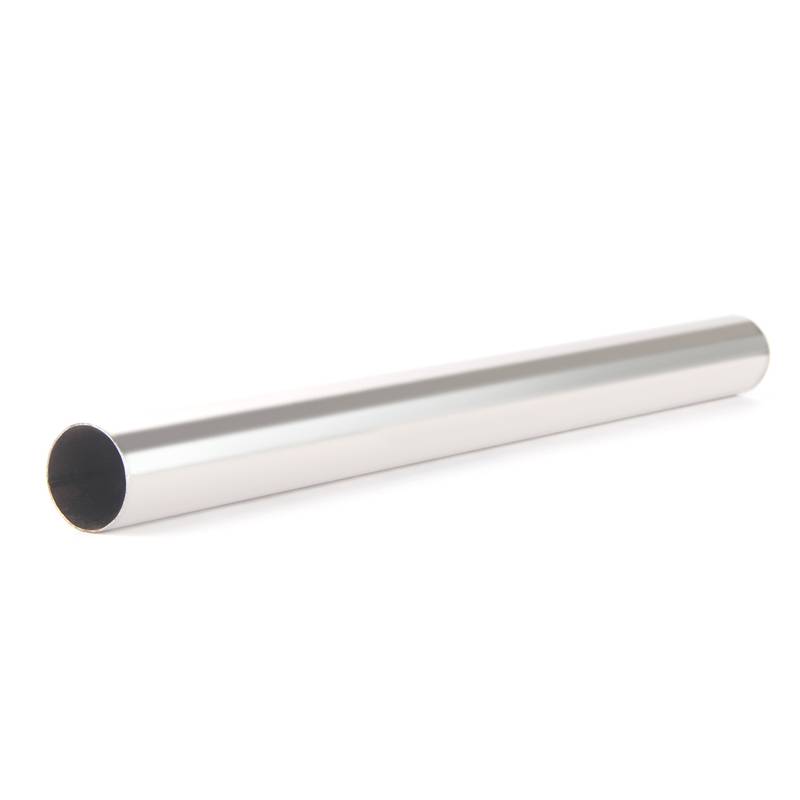1060 Aluminum Round Tube
Ian Industries offers a wide range of 1060 aluminum tube sizes and processing service
Additional information
| Outer Diameter | 3-250mm |
|---|---|
| Wall Thickness | 0.2-60mm |
| Grade | 1000 series |
| Temper | O Type, H14, H16, H18, H22, etc |
| Surface Treatment | Anodized, Mill finish, Polished, Powder Coated, etc |
| Product Standard | ASTM, ASME, EN, JIS, DIN, GB/T, etc |
| Processing Service | Bending, Welding, Punching, Laser Cutting, Threading, Lathing, Flaring, Shrinking |
Product Details:
1060 Aluminum Round Tube
1060 is a commercially pure aluminum (minimum 99.6% Al) with excellent electrical/thermal conductivity, corrosion resistance, and workability, but lower mechanical strength compared to alloyed grades. It is widely used in electrical, chemical, and general industrial applications.
1. Chemical Composition
| Element | Composition (%) |
|---|---|
| Aluminum (Al) | ≥ 99.60 |
| Iron (Fe) | ≤ 0.35 |
| Silicon (Si) | ≤ 0.25 |
| Copper (Cu) | ≤ 0.05 |
| Manganese (Mn) | ≤ 0.03 |
| Zinc (Zn) | ≤ 0.05 |
| Others (each) | ≤ 0.03 |
Key Features:
-
High purity (99.6%+ Al) → Excellent conductivity and corrosion resistance.
-
Soft & highly ductile → Easy to form, weld, and machine.
-
Lower strength → Not suitable for high-stress structural applications.
2. Mechanical Properties by Temper
| Temper | Tensile Strength (MPa) | Yield Strength (MPa) | Elongation (%) | Hardness (HV) | Primary Use Case |
|---|---|---|---|---|---|
| O (Annealed) | 70 – 90 | 30 – 40 | 30 – 40 | 20 – 30 | Deep drawing, electrical conductors |
| H12 | 90 – 110 | 80 – 90 | 12 – 18 | 30 – 40 | Light structural tubing |
| H14 | 100 – 120 | 90 – 100 | 8 – 12 | 35 – 45 | Moderate-strength tubing |
| H16 | 110 – 130 | 100 – 110 | 6 – 10 | 40 – 50 | Higher rigidity, limited forming |
| H18 (Full Hard) | 120 – 140 | 110 – 120 | 4 – 6 | 45 – 55 | Stiff tubing, minimal bending |
Notes:
-
O temper is the softest (best for bending, welding, and deep drawing).
-
H18 is the strongest but least ductile (may crack if overworked).
-
Lower strength than alloyed grades (e.g., 3003, 5052, 6061).
3. Key Properties
✅ Electrical Conductivity – ~61% IACS (ideal for busbars, cables).
✅ Thermal Conductivity – ~220 W/m·K (better than alloyed Al).
✅ Corrosion Resistance – Excellent (forms a protective oxide layer).
✅ Formability – Excellent (easy to bend, stamp, weld).
✅ Weldability – Good (TIG, MIG, resistance welding).
❌ Low Strength – Not suitable for heavy load-bearing structures.
4. Common Applications
-
Electrical conductors (busbars, cable sheaths, transformer windings).
-
Heat exchangers & cooling tubes (high thermal conductivity).
-
Chemical industry tubing (resistant to acids and alkalis).
-
Decorative/architectural tubing (easy to polish, anodize, or coat).
-
Food/pharmaceutical packaging (non-toxic, corrosion-resistant).
5. Standards & Specifications
-
ASTM B210 / B483: Seamless & welded tubes.
-
GB/T 4437 (China): Pure aluminum tubes.
-
EN 573 / EN 754: European standards.
6. Comparison with Other Alloys
| Alloy | Advantages over 1060 | Disadvantages |
|---|---|---|
| 1060 | Best conductivity, formability | Very low strength |
| 3003 | Higher strength (Mn alloyed) | Lower conductivity |
| 5052 | Much stronger, good corrosion resistance | More expensive |
| 6061 | Heat-treatable, structural strength | Poor conductivity |
